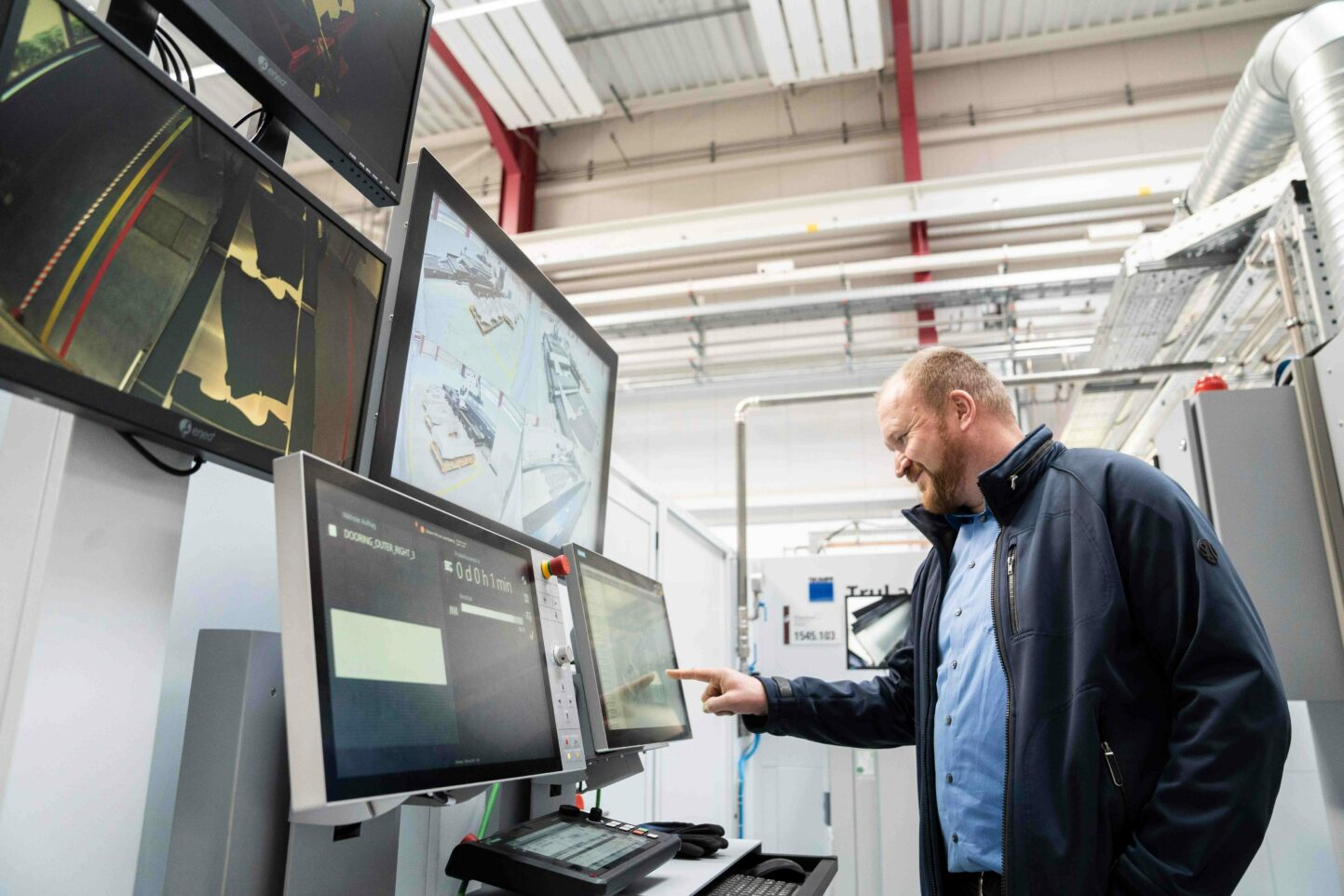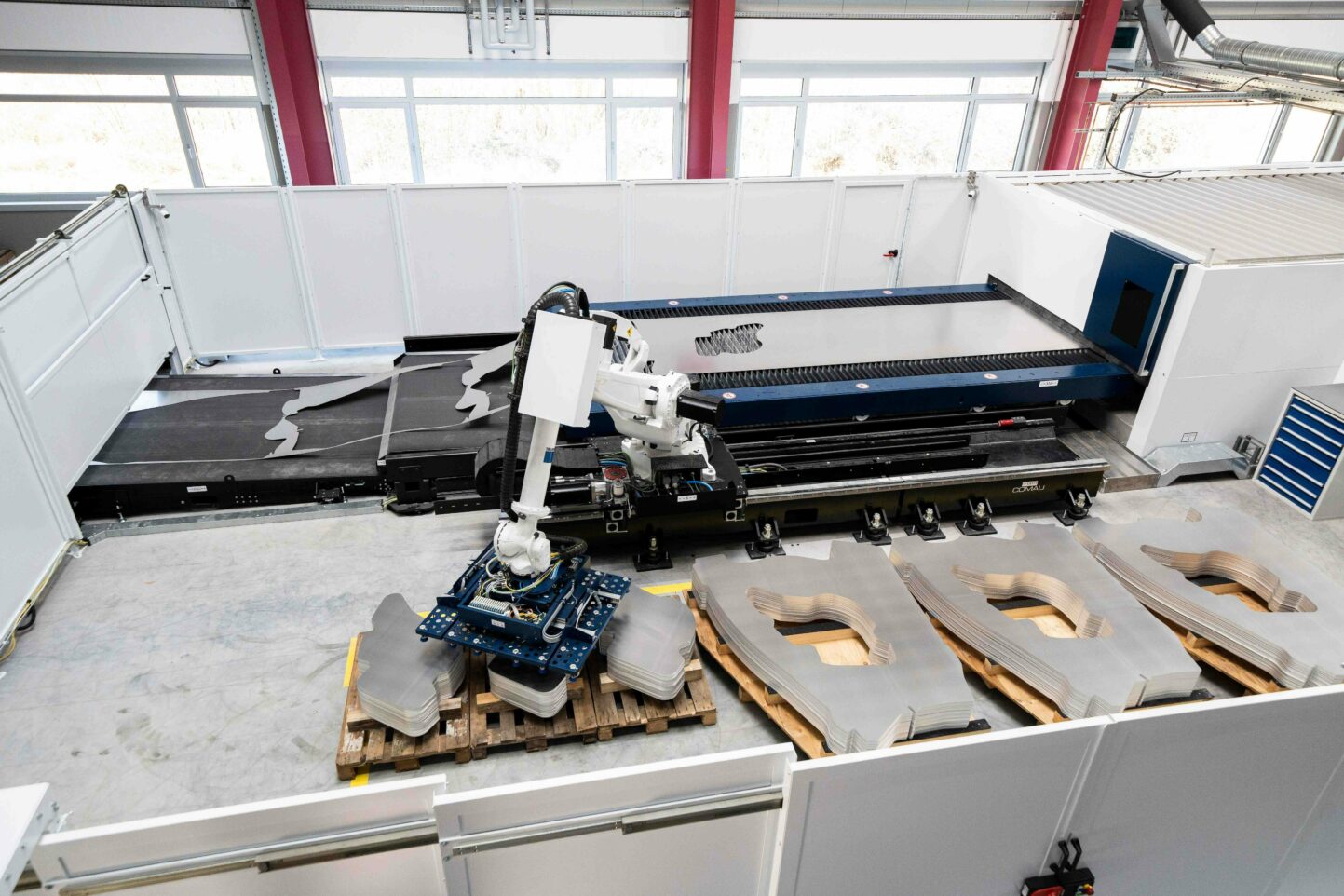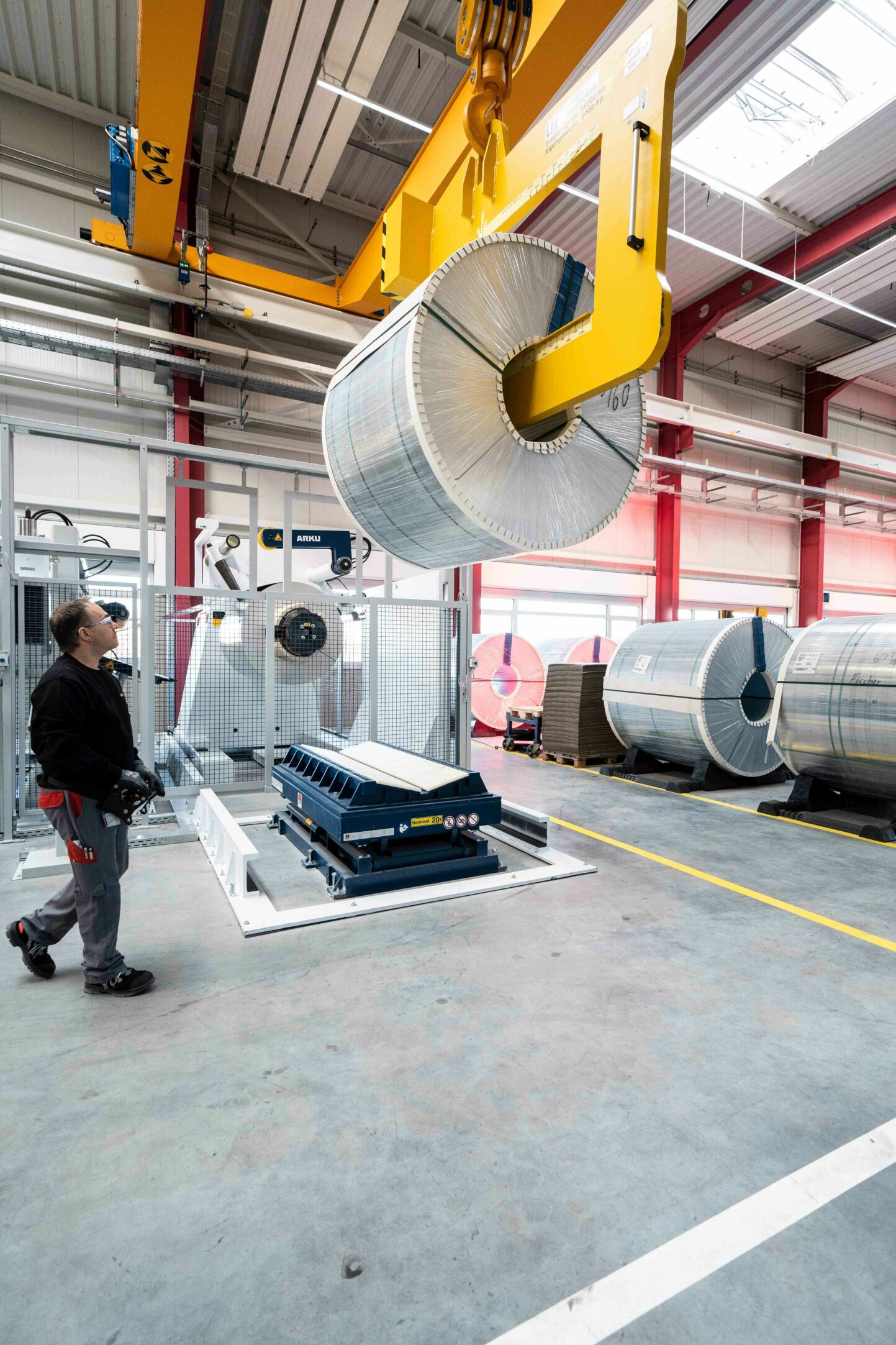
The TruLaser 8000 Coil Edition can process up to 25 metric tons of coiled sheet metal from start to finish without any human intervention. It is an attractive option for any company interested in flexible, high-volume solutions for sheet metal fabrication, including automotive suppliers and automakers, electrical cabinet manufacturers, elevator producers and HVAC manufacturers.
“The TruLaser 8000 Coil Edition is another example of TRUMPF helping its customers to join the drive toward greater sustainability in the manufacturing industry while simultaneously boosting efficiency. Compared to conventional laser-cutting machines, the solution allows companies to save almost 1,700 metric tons of steel a year, which equates to a saving of some 4,000 metric tons of CO2 and a reduction in material costs of 1.6 million euros,” says Richard Bannmüller, CEO at TRUMPF Laser Technology Germany.
Impressive flexibility extends to volume production
Thanks to TRUMPF’s new laser-blanking system, companies can enjoy the benefits of laser processing even in high-volume production environments. “Volume manufacturers often use presses for blanking operations. But that means they need to adjust or even replace the tool whenever they make the slightest modification to their components, which ultimately costs time and money. Many industrial sectors are seeing significant reductions in the scale of individual production runs, which makes these modifications even more costly and time intensive. The laser allows users to carry out these modifications without requiring a new tool, so it’s much, easier, faster, cheaper, and more flexible,” says project manager Oliver Müllerschön, who is responsible for the new system at TRUMPF. The high-tech company developed the new system in cooperation with SIEMENS and mechanical engineering company ARKU. Together with TRUMPF, Siemens is responsible for the control system and ARKU for the coil system. The fischer group in Achern is one of the first companies to put the new solution into practice. “Deploying a laser-blanking line is a new approach for us. It offers huge benefits to our production process, partly due to its high flexibility and quality, but also thanks to the fact that we require hardly any tools compared to conventional blanking presses,” says Hans-Peter Fischer, CEO and owner of the fischer group. The company is an early adopter of TRUMPF’s laser-blanking system, which it uses to produce high-strength aluminium structural components for vehicle-body manufacturing.
Material savings for sustainable production
Coil production enables users to achieve more efficient nesting of parts. Conventional sheets are limited by their four outer edges, which often make it difficult for production workers to make full use of the entire sheet. Unused sections of the sheet either have to be discarded as scrap or melted down. A coil, which can be up to 1.5 kilometres long, solves this problem by allowing users to nest an almost endless number of parts on the sheet. This reduces material consumption by around 15 percent. Compared to conventional blanking presses, the new system also heralds a significant reduction in construction and logistics costs. It makes production more profitable by eliminating tooling costs, optimizing the use of material, reducing assembly costs and boosting flexibility in the production environment.
The material flow is different to that of conventional 2D laser machines, leading to much lower cycle times and new automation opportunities for high-volume production series. The system can be flexibly adapted to any contours. It is designed for thin-sheet processing and can handle sheet thicknesses of up to 6.5 millimetres.

Automation reduces cycle times
The production system is fully automated. An innovative system for transporting the sheet metal during cutting keeps the material moving quickly through the whole process, with impressive gains in productivity. The new system also uses many of the tried-and-tested features that TRUMPF is renowned for. These include Smart Collision Prevention, which prevents cut parts from tilting and damaging the laser cutting head. The entire line – from the coil stock to the pallets of finished parts – can be conveniently monitored and controlled from a single operator module. The points at which parts are removed and stored are automatically programmed and displayed on the screen, for example, and the portable operator module can be used at any of the key points in the system for set-up and servicing tasks.
Robot makes unloading easier
A robot is used to unload the entire system to ensure fast and reliable part removal. TRUMPF’s TruTops software, which will be merged into Oseon in the future, calculates the input data for ready-made cycles or part programs that run on the Sinumerik. This means users do not have to worry about the specific robot movements or how these are programmed, so the robot can be handled without any specialist expertise or prior training.
TRUMPF collaborated with Siemens on the control unit for the unloading system, which consists of a support conveyor and a robot. This makes use of the new Sinumerik One CNC control software, which is fully integrated in the TIA Portal. The TIA Portal forms the hub of an end-to-end digital engineering process. The data from the TIA Portal can be fed into Create MyVirtual Machine to create the digital twin of the automation. This digital representation of the control unit, machine behaviour and kinematics enables virtual testing and commissioning of the system directly within the TIA Portal.
Shorter time to market, better performance
“The Sinumerik One lies at the heart of efforts to globally transform the machine-tool industry and to future-proof manufacturing in an increasingly digitalized sector. Thanks to the seamless interaction between the virtual and real portfolios, the Sinumerik One enables machine makers such as TRUMPF to significantly reduce time to market while offering users the benefits of improved machine performance,” says Uwe Ruttkamp, head of Machine Tool Systems at SIEMENS. The loading module was developed by ARKU, a global market and innovation leader for roller levellers. It can accommodate coils up to 2,150 millimetres wide and accepts a variety of materials. The system is already available for purchase.
